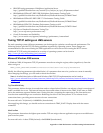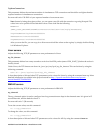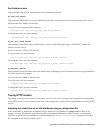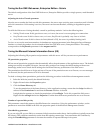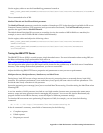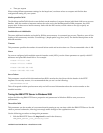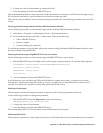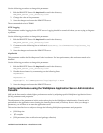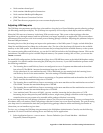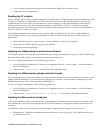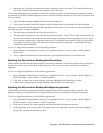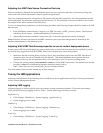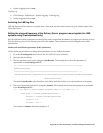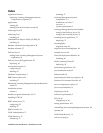• Web container thread pool
• Web container MaxKeepAliveConnections
• Web container MaxKeepAliveRequests
• JDBC Data Source Connection Pool size
• JDBC Data Sources properties (to correct content deployment issues)
Adjusting JVM Heap size
The JVM heap size parameter specifies how often and how long the Java Virtual Machine spends collecting garbage
(de-allocating unused Java objects). The JVM heap is a repository for live objects, dead objects, and free memory.
When the JVM runs out of memory in the heap, JVM execution stops. This occurs so that a garbage collection
algorithm can go through memory and free space that is no longer required by an application. This process affects
performance because server-side work cannot proceed during garbage collection. Adjusting this parameter helps to
increase LMS performance.
Increasing the size of the Java heap can improve the performance of the LMS system. To begin, set both Initial Java
Heap Size and Maximum Java Heap size to the same value. The size of the Java heap will depend on the available
memory on the LMS system. You should never increase the Java heap beyond the available memory on the system.
On a system running Microsoft Windows, you can do Ctrl-Alt-Del and select the Task Manager button. Click on the
performance Tab and look-up the Available Physical memory. On systems running AIX or Linux, you can use the
vmstat command.
For small LMS configurations, the Maximum Java Heap size of 256 MB that comes as the default Websphere setting
is acceptable. You should consider increasing the JVM heap size, however, if your LMS installation operates under
the following conditions:
• The Learning Server and Delivery Server are configured to run on 2 separate machines and each machine
has at least 2 GB of RAM.- increase the maximum heap size to 768 MB.
On the other hand, if your machine has only 2 GB of RAM and you are running both the Learning Server
and Delivery Server on the same machine - leave the setting of 256 MB unchanged.
• The Learning Server and Delivery Server are running on 2 separate machines and each machine has 4 GB of
RAM - increase the maximum heap size to 1536 MB.
• The Learning Server and Delivery Server are running on the same machine and the machine has more than 2
GB of RAM - increase the maximum Heap size to 768 MB.
• The Learning Server and Delivery Server are running on the same machine and the machine has more than 4
GB of RAM - increase the maximum Heap size to 1536 MB.
• Your machine has 4 GB or more of RAM - you may consider increasing the Java heap size to 1.5 GB.
Increasing the Java heap size beyond 768 MB, however, might cause garbage collection to take longer than
normal and cause your system to be unusable while garbage collection is occurring.
If you set a large heap size, full garbage collection is slower, but it occurs less frequently. If you set your heap size in
accordance with your memory needs, full garbage collection is faster, but occurs more frequently. The goal of tuning
your heap size is to minimize the time that you spend doing garbage collection while maximizing the number of
clients that you can handle at a given time.
To view, set, or change the JVM heap size parameter in the WebSphere Administrative Console, use the following
procedure. Do this for both the Learning Server and Delivery Server applications.
1. Select Application Servers – <server name> - Process Definition -Java Virtual Machine – Additional
Properties/General Properties
Appendix A: LMS Performance and Fine-tuning Information 115



